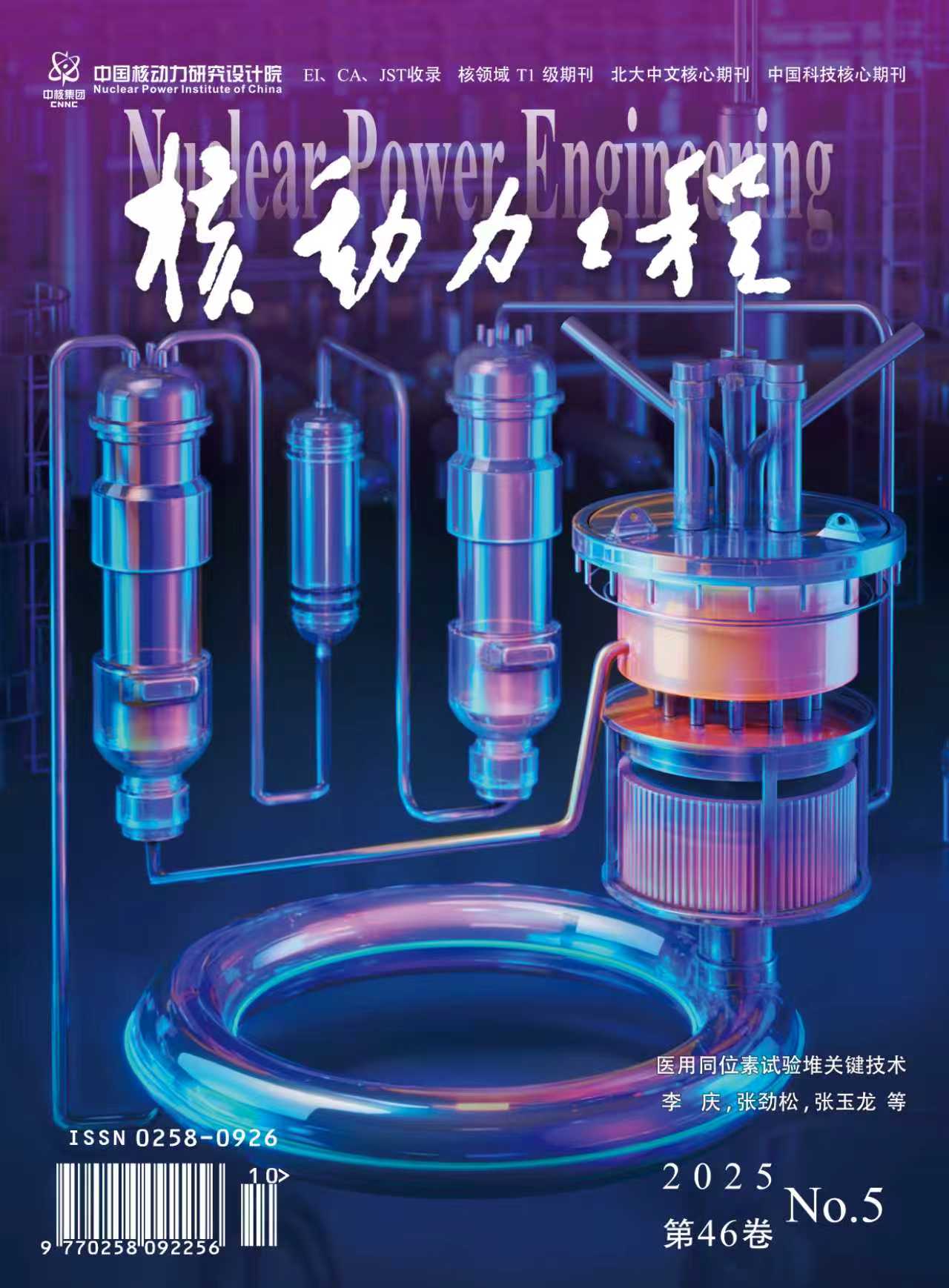2019 Vol. 40, No. 5
Display Method:
2019, 40(5): 1-5.
Abstract:
2019, 40(5): 13-17.
Abstract:
2019, 40(5): 18-22.
Abstract:
2019, 40(5): 23-28.
Abstract:
2019, 40(5): 29-34.
Abstract:
2019, 40(5): 35-40.
Abstract:
2019, 40(5): 41-45.
Abstract:
2019, 40(5): 46-50.
Abstract:
2019, 40(5): 51-55.
Abstract:
2019, 40(5): 56-60.
Abstract:
2019, 40(5): 61-66.
Abstract:
2019, 40(5): 67-73.
Abstract:
2019, 40(5): 74-78.
Abstract:
Research of Main Influencing Factors during Sol-Gel Preparing Process of U-Zr-Hf Burable Poison Fuel
2019, 40(5): 79-84.
Abstract:
2019, 40(5): 85-91.
Abstract:
2019, 40(5): 92-96.
Abstract:
2019, 40(5): 97-102.
Abstract:
2019, 40(5): 103-107.
Abstract:
2019, 40(5): 108-110.
Abstract:
2019, 40(5): 111-117.
Abstract:
2019, 40(5): 118-123.
Abstract:
2019, 40(5): 124-129.
Abstract:
2019, 40(5): 130-134.
Abstract:
2019, 40(5): 135-139.
Abstract:
2019, 40(5): 140-145.
Abstract:
Development of Underwater Decontamination Device for Spent Fuel Storage Rack in Nuclear Power Plants
2019, 40(5): 146-149.
Abstract:
2019, 40(5): 150-155.
Abstract:
2019, 40(5): 156-159.
Abstract:
2019, 40(5): 160-164.
Abstract:
2019, 40(5): 165-169.
Abstract:
2019, 40(5): 175-179.
Abstract:
2019, 40(5): 180-183.
Abstract:
2019, 40(5): 184-186.
Abstract:
2019, 40(5): 187-191.
Abstract:
2019, 40(5): 192-196.
Abstract:
2019, 40(5): 197-201.
Abstract:
2019, 40(5): 202-206.
Abstract:



